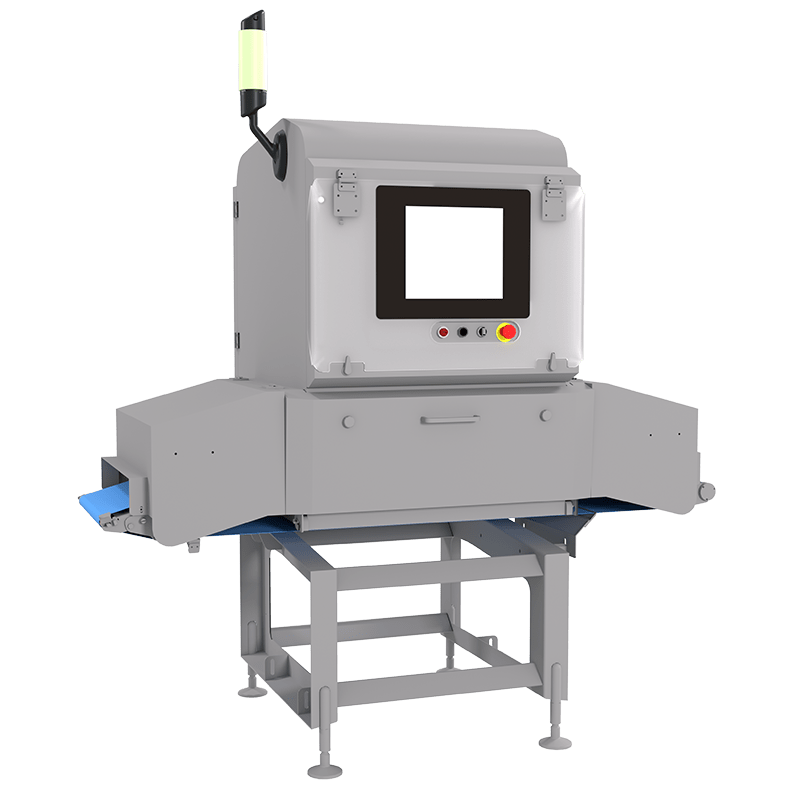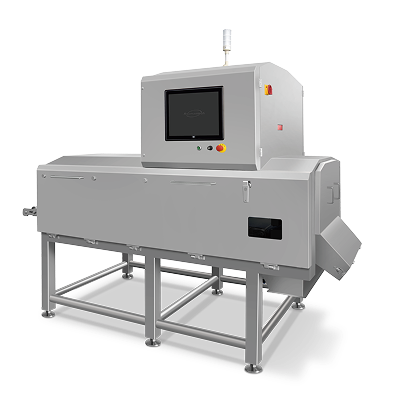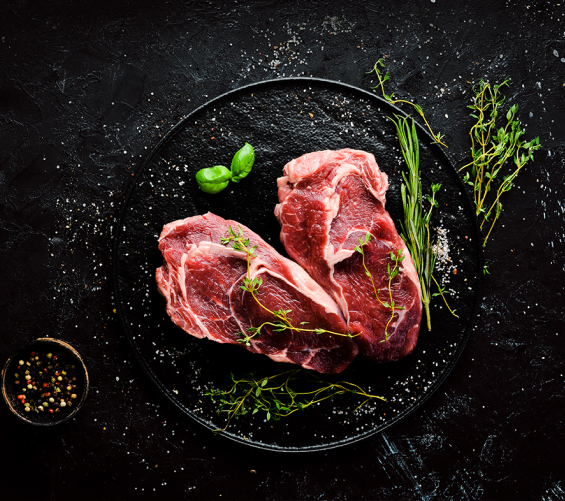Advancing Food Safety:Overcoming Challenges in Residual Bone Detection in Meat Processing
In the high-volume world of meat processing, product safety is non-negotiable. Consumers demand contaminant-free meat, and even a single oversight can trigger health risks, costly recalls, or lasting reputational damage. Among the most stubborn threats are residual bone fragments—tiny, sharp shards that persist after mechanical deboning. These can cause choking, oral injury, or digestive tract damage, directly undermining food safety standards.
This article examines the core difficulties in detecting residual bones in chicken and red meats (pork, beef, lamb), then outlines a technical approach using integrated high-resolution imaging, dual-energy differentiation, and AI-enhanced analysis. Understanding both problems and principles equips processors to evaluate detection strategies objectively.
Pain Points in Chicken Meat Residual Bone Detection
Mechanical deboning is efficient but imperfect. High-speed blades shave hollow bones into needle-like splinters, especially from wings, legs, or kneel. Fragments under 2 mm embed in muscle—invisible to routine inspection.
Detection Failure Mode | Root Cause | Real-World Impact |
Low Resolution | Standard X-ray pixel density < 0.4 mm | Fragments < 1 mm vanish in image noise |
Density Overlap | Bone and meat attenuation nearly identical | Grayscale images show only subtle shading |
These limitations generate chronic false negatives. Batches pass inspection yet reach consumers with hazards intact. Processors respond by over-rejecting product, driving up waste and cost, or by accepting elevated risk—neither option sustainable under modern regulatory pressure.
Pain Points in Red Meat Residual Bone Detection
Pork, beef, and lamb present different but equally formidable obstacles. Bones are denser, yet mechanical separation still creates fine splinters. Thick muscle and fat often encapsulate fragments, shielding them from physical removal.
Challenge | Mechanism | Detection Consequence |
Small Fragment Size | Sub-mm splinters from grinding | Below traditional sensitivity threshold |
High Thickness | Stacked slabs > 100 mm | Exponential beam attenuation |
Surface Irregularity | Contours, marbling, folding | Shadow artifacts → false positives/negatives |
Outcome: inconsistent quality control, higher labor for manual checks, and persistent exposure to recalls or litigation.
A Technical Framework for Reliable Detection
Three complementary technologies overcome these barriers:
Technology | Core Principle | Solves |
Dual-Energy X-Ray | High/low energy absorption differs by atomic number | Density overlap & thickness interference |
UHD Imaging | Sub-0.1 mm pixel pitch + advanced detectors | Low-resolution blind spots |
AI Image Analysis | CNNs trained on 10,000+ annotated scans | Artifact noise, complex morphologies |
How Dual-Energy Works: A Simple Breakdown
·Bone: absorbs more low-energy X-rays
· Meat: absorbs similarly across both
· Result: A material-specific image—bones highlighted, regardless of depth or density similarity.
Performance Expectations Based on Technology Integration
When dual-energy differentiation, UHD imaging, and trained AI are fully implemented:
Metric | Expected Performance | Key Enabler |
Min. Detectable Size | 0.5–1 mm | UHD resolution |
Detection Sensitivity | >95% (optimized) | Dual-energy + AI |
False Positive Rate | <3–5% | AI artifact suppression |
Max Thickness (Red Meat) | 120–150 mm | Dual-energy penetration |
Artifact Error Reduction | 50–70% vs. single-energy | AI shadow filtering |
Actual results depend on line speed, product consistency, and system tuning—verified through on-site validation.
Integration Specs
· Conveyor interface: Standard 400–600 mm width
· Speed: Up to 600 pieces/min
·Data output: XML/CSV logs for HACCP compliance
Practical Implications for Processors
Effective residual bone detection is no longer a compromise between speed, cost, and safety. Systems built on dual-energy physics, UHD optics, and trained AI deliver consistent performance across poultry and red meat.
Benefit | Operational Impact |
Fewer Complaints | Reduced consumer risk |
Less Rework/Waste | Lower rejection losses |
Audit-Ready Logs | Full traceability |
Line Flexibility | Mixed products, no recalibration |
Implementation Roadmap (4 Steps)
Step | Action | Outcome |
1. Line Audit | Measure current miss rate & thickness | Baseline data |
2. Pilot Test | Install on one line, validate sensitivity | Proof of performance |
3. Tune AI | Feed local product samples | Customized detection |
4. Scale | Roll out with remote monitoring | Full-line coverage |
Maintenance: Quarterly calibration + software updates—fits existing workflows.
By grounding detection in measurable physical and computational principles, meat processors can move beyond the limitations of yesterday’s X-ray systems and meet tomorrow’s safety expectations with confidence.

Related Articles
-
 Oct-31-2025
Oct-31-2025X-Ray Technology: Safeguarding Poultry Product Safety
Poultry processors face increasing demands for food safety and quality. Bone fragments or foreign materials such as metal, glass, or ceramic can appear in chicken breasts, thighs, whole chickens, and processed products like nuggets or patties. Raymantech X-Ray Inspection Systems make this process safer and smarter by detecting even tiny or low-density contaminants that traditional methods often miss.learn more -
 Oct-31-2025
Oct-31-2025Understanding the Role of X-Ray Inspection in Pork Food Safety
Raymantech’s AI UHD and Dual-Energy X-Ray systems take food safety to the next level. Designed for modern pork processing lines, they detect internal and external hazards like bone fragments, metal, glass, ceramic, and plastic — keeping consumers safe, improving efficiency, and helping processors meet the world’s strictest food safety standards.learn more -
 Oct-31-2025
Oct-31-2025Boosting Beef Safety with Raymantech X-ray Inspection Technology
Beef x ray inspection boosts safety by detecting bone fragments, contaminants, and defects, ensuring high-quality beef and compliance with food safety standards.learn more

Quick Links
Contact
Tel: 717-490-1513
Add: 1050 Kreider Drive -
Suite 500, Middletown,
PA 17057







